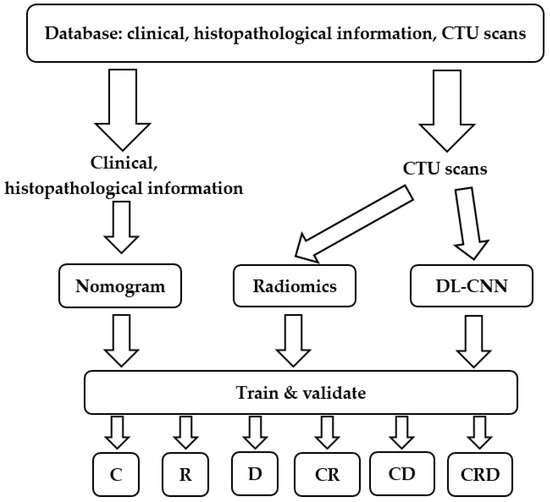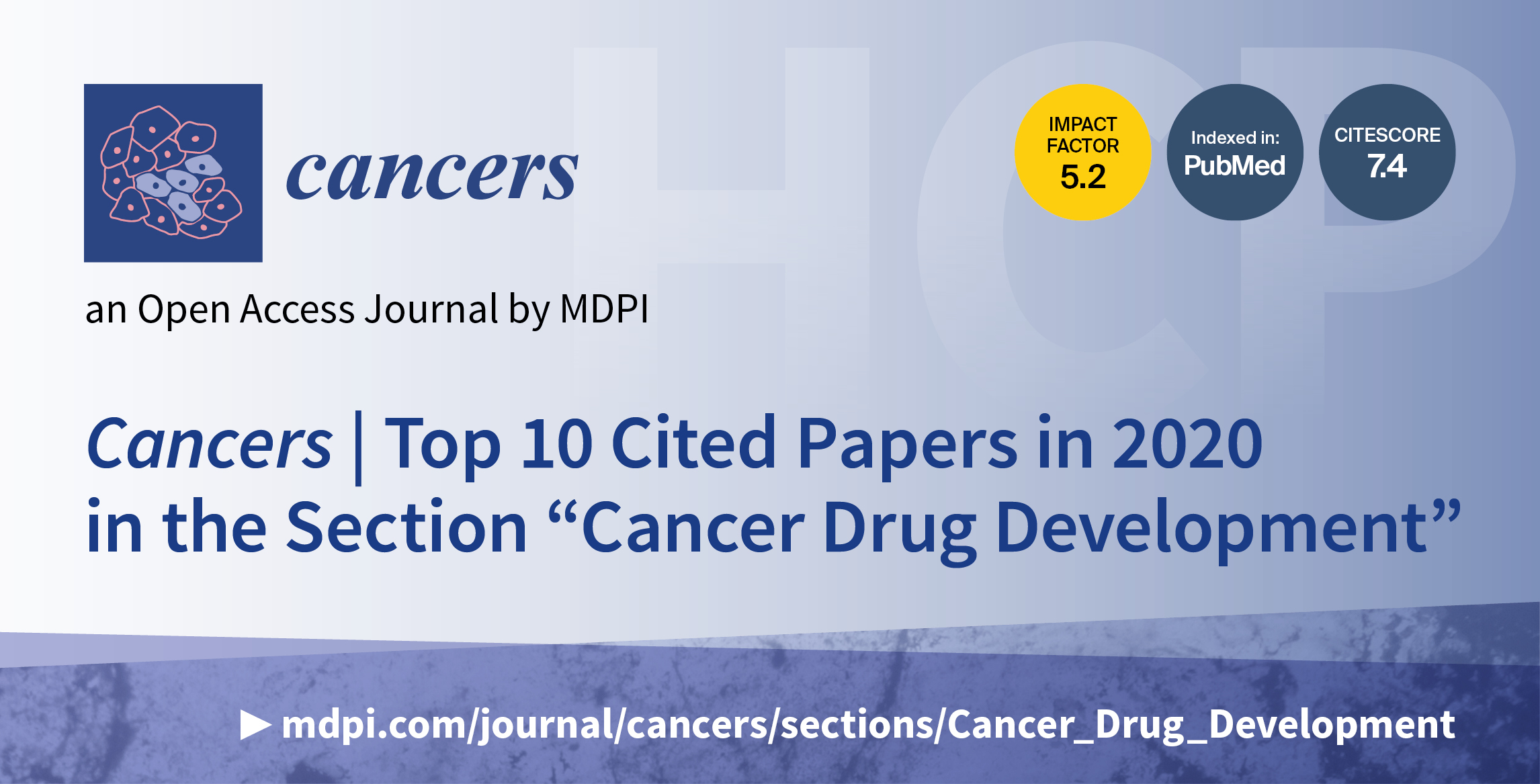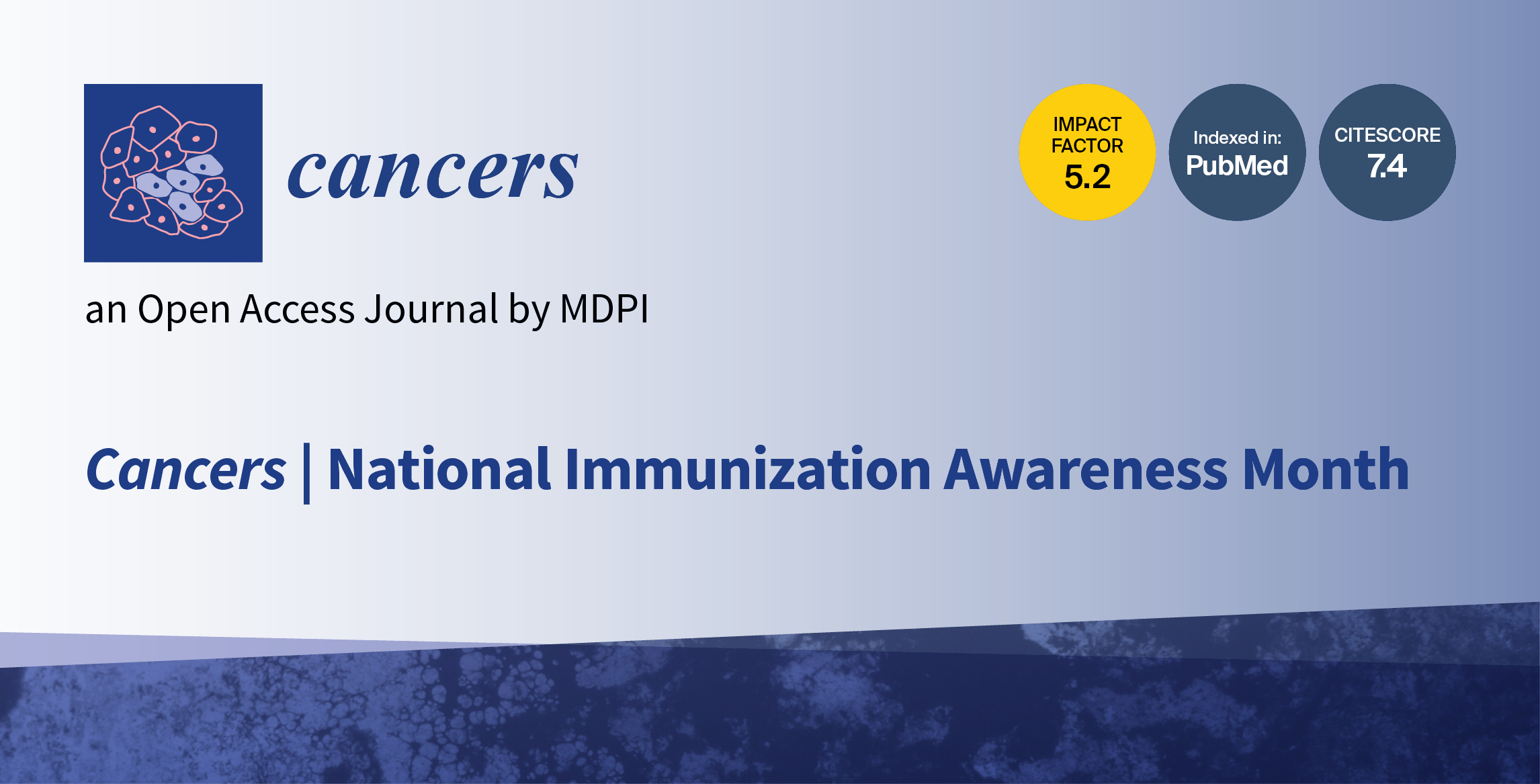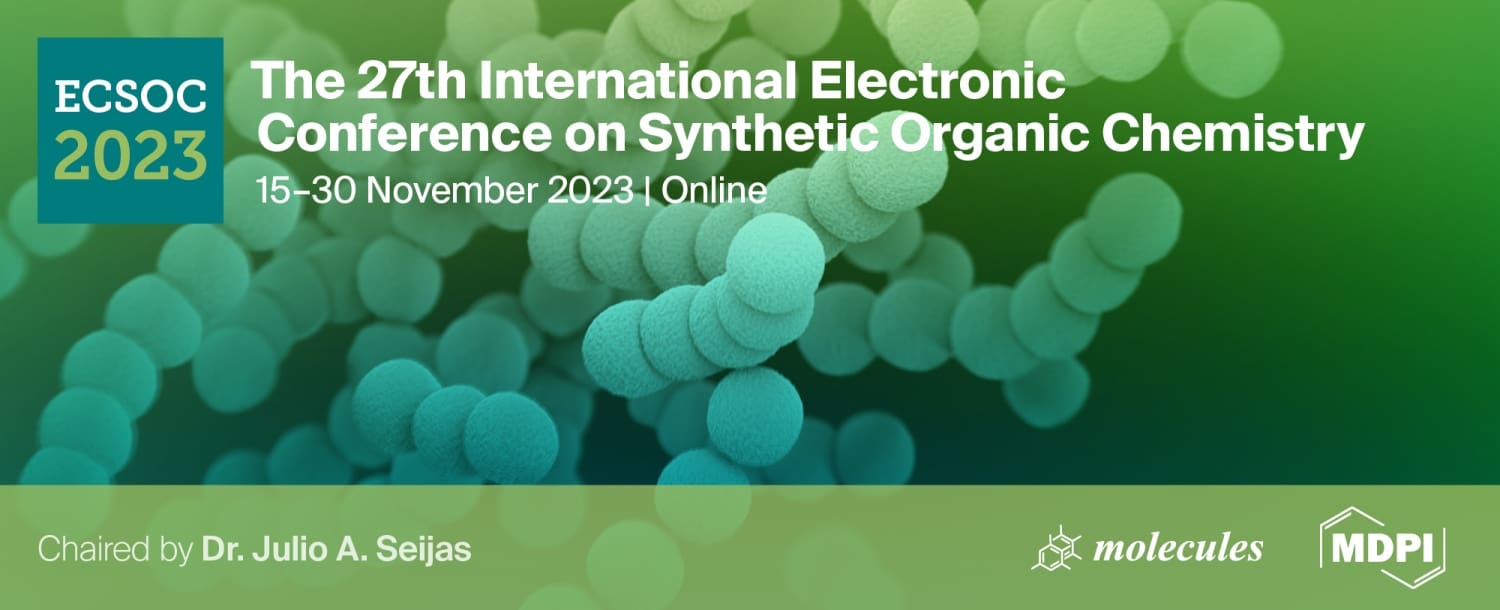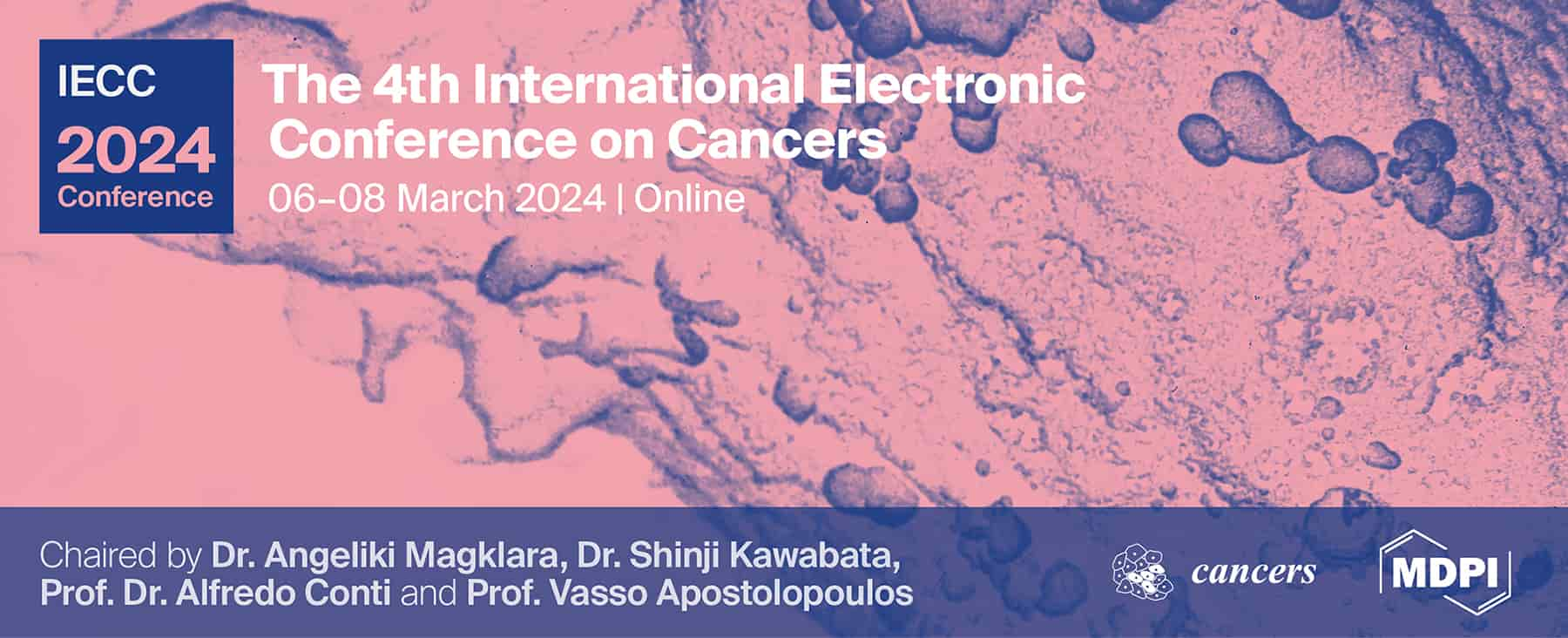-
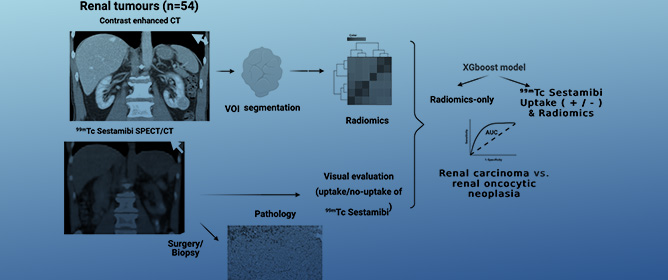 Machine Learning Integrating 99mTc Sestamibi SPECT/CT and Radiomics Data Achieves Optimal Characterization of Renal Oncocytic Tumors
Machine Learning Integrating 99mTc Sestamibi SPECT/CT and Radiomics Data Achieves Optimal Characterization of Renal Oncocytic Tumors -
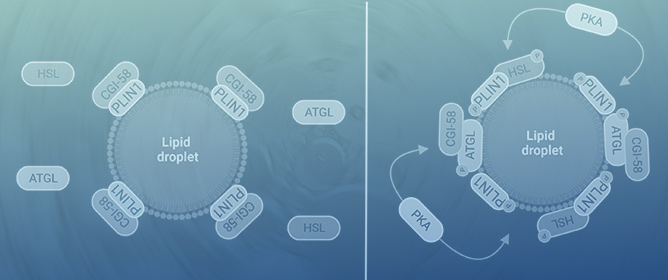 Challenges in Pharmacological Intervention in Perilipins (PLINs) to Modulate Lipid Droplet Dynamics in Obesity and Cancer
Challenges in Pharmacological Intervention in Perilipins (PLINs) to Modulate Lipid Droplet Dynamics in Obesity and Cancer -
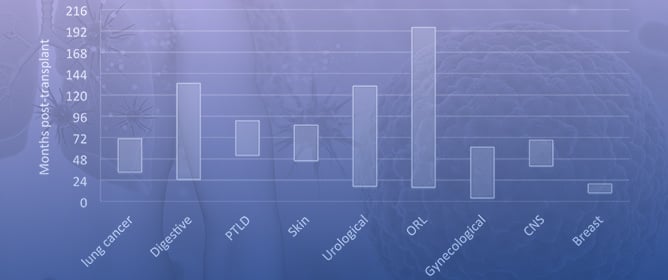 Influence of De Novo Malignancies on Long-Term Survival after Lung Transplantation
Influence of De Novo Malignancies on Long-Term Survival after Lung Transplantation -
 Cancer Cell-Intrinsic Alterations Associated with an Immunosuppressive Tumor Microenvironment and Resistance to Immunotherapy in Lung Cancer
Cancer Cell-Intrinsic Alterations Associated with an Immunosuppressive Tumor Microenvironment and Resistance to Immunotherapy in Lung Cancer -
 Exercise Training in Elderly Cancer Patients: A Systematic Review
Exercise Training in Elderly Cancer Patients: A Systematic Review
Journal Description
Cancers
Cancers
is a peer-reviewed, open access journal of oncology, published semimonthly online by MDPI. The Irish Association for Cancer Research (IACR), Spanish Association for Cancer Research (ASEICA), Biomedical Research Centre (CIBM), British Neuro-Oncology Society (BNOS) and Spanish Group for Cancer Immuno-Biotherapy (GÉTICA) are affiliated with Cancers and their members receive a discount on the article processing charges.
- Open Access— free for readers, with article processing charges (APC) paid by authors or their institutions.
- High Visibility: indexed within Scopus, SCIE (Web of Science), PubMed, PMC, Embase, CAPlus / SciFinder, and other databases.
- Journal Rank: JCR - Q2 (Oncology) / CiteScore - Q1 (Oncology)
- Rapid Publication: manuscripts are peer-reviewed and a first decision is provided to authors approximately 18.2 days after submission; acceptance to publication is undertaken in 2.6 days (median values for papers published in this journal in the first half of 2023).
- Recognition of Reviewers: reviewers who provide timely, thorough peer-review reports receive vouchers entitling them to a discount on the APC of their next publication in any MDPI journal, in appreciation of the work done.
- Sections: published in 18 topical sections.
- Companion journals for Cancers include: Radiation and Onco.
Impact Factor:
5.2 (2022);
5-Year Impact Factor:
5.6 (2022)
Latest Articles
Survival Prediction of Patients with Bladder Cancer after Cystectomy Based on Clinical, Radiomics, and Deep-Learning Descriptors
Cancers 2023, 15(17), 4372; https://doi.org/10.3390/cancers15174372 (registering DOI) - 01 Sep 2023
Abstract
Accurate survival prediction for bladder cancer patients who have undergone radical cystectomy can improve their treatment management. However, the existing predictive models do not take advantage of both clinical and radiological imaging data. This study aimed to fill this gap by developing an
[...] Read more.
Accurate survival prediction for bladder cancer patients who have undergone radical cystectomy can improve their treatment management. However, the existing predictive models do not take advantage of both clinical and radiological imaging data. This study aimed to fill this gap by developing an approach that leverages the strengths of clinical (C), radiomics (R), and deep-learning (D) descriptors to improve survival prediction. The dataset comprised 163 patients, including clinical, histopathological information, and CT urography scans. The data were divided by patient into training, validation, and test sets. We analyzed the clinical data by a nomogram and the image data by radiomics and deep-learning models. The descriptors were input into a BPNN model for survival prediction. The AUCs on the test set were (C): 0.82 ± 0.06, (R): 0.73 ± 0.07, (D): 0.71 ± 0.07, (CR): 0.86 ± 0.05, (CD): 0.86 ± 0.05, and (CRD): 0.87 ± 0.05. The predictions based on D and CRD descriptors showed a significant difference (
(This article belongs to the Special Issue Staging and Pathology of Bladder Cancer)
►
Show Figures
Open AccessArticle
Swallowing after Oral Oncological Treatment: A Five-Year Prospective Study
by
, , , , and
Cancers 2023, 15(17), 4371; https://doi.org/10.3390/cancers15174371 (registering DOI) - 01 Sep 2023
Abstract
Background: Swallowing rehabilitation in curative treated patients with oral cancer is still a challenge. Different factors may influence these patients’ swallowing function. The aim of this study was to identify factors associated with swallowing function up to 5 years after cancer treatment. Methods:
[...] Read more.
Background: Swallowing rehabilitation in curative treated patients with oral cancer is still a challenge. Different factors may influence these patients’ swallowing function. The aim of this study was to identify factors associated with swallowing function up to 5 years after cancer treatment. Methods: Swallowing duration and frequency of 5 mL water and 15 mL applesauce were measured in 123 patients treated for oral cancer. Mixed model analyses were performed to identify associated factors. Results: Age influenced all measured swallowing outcomes. Assessment moment, gender, tumor location, maximum tongue force, and tactile sensory function of the tongue were associated with both water and applesauce swallowing duration, tumor classification was associated with water swallowing duration, and alcohol consumption was associated with applesauce swallowing duration. Assessment moment, cancer treatment, maximum tongue force, and tactile sensory function of the tongue were associated with water and applesauce swallowing frequency. Conclusion: Patients who are older at diagnosis, women, and patients who regularly consume alcohol before their treatment may have poorer swallow functioning after curative oral cancer treatment. Patients that fit these criteria should have their swallowing evaluated during clinical follow-ups and sent to swallowing therapy when needed. During this therapy, optimizing tongue function needs attention to maintain an optimal swallowing function.
Full article
(This article belongs to the Section Cancer Therapy)
►▼
Show Figures

Figure 1
Open AccessArticle
Metabolomics of Duodenal Juice for Biliary Tract Cancer Diagnosis
by
, , , , , , , , , , , , , and
Cancers 2023, 15(17), 4370; https://doi.org/10.3390/cancers15174370 (registering DOI) - 01 Sep 2023
Abstract
The poor prognosis of malignant biliary diseases is partially caused by their difficult early diagnosis. Therefore, many patients are only diagnosed at advanced stages. This study aimed to improve diagnosis by clarifying the differences in the duodenal juice metabolomes of benign and malignant
[...] Read more.
The poor prognosis of malignant biliary diseases is partially caused by their difficult early diagnosis. Therefore, many patients are only diagnosed at advanced stages. This study aimed to improve diagnosis by clarifying the differences in the duodenal juice metabolomes of benign and malignant biliary diseases. From October 2021 to January 2023, duodenal juice was obtained from 67 patients with suspected biliary diseases who required endoscopic ultrasonography and endoscopic retrograde cholangiography for diagnosis/treatment. The samples metabolomes were analyzed via nuclear magnet resonance spectroscopy using an 800-MHz spectrometer. Metabolomes of malignant and benign diseases were then compared, and multivariate analysis was performed to determine the relevant factors for malignancy/benignancy. For benignancy, no significant predictors were observed. For malignancy, acetone was a significant predictor, with higher concentrations in the malignant group than in the benign group. Regarding the receiver operating characteristic curve analysis for biliary tract carcinoma diagnosis, the predictive value of acetone in duodenal juice was comparable with serum CA19-9 levels (area under the curve: 0.7330 vs. 0.691, p = 0.697). In conclusion, duodenal juice metabolomics is a feasible method that is available for differential diagnosis in the biliary disease field.
Full article
(This article belongs to the Special Issue Current Epidemiologic, Diagnostic, and Therapeutic Aspects of Cholangiocarcinoma (CCA))
►▼
Show Figures
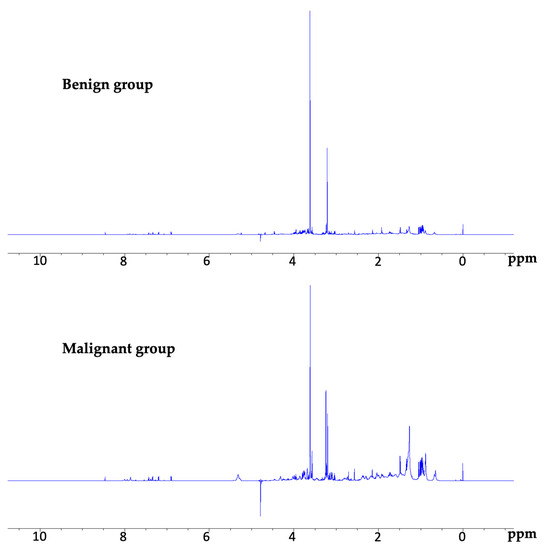
Figure 1
Open AccessArticle
Muscle and Adipose Wasting despite Disease Control: Unaddressed Side Effects of Palliative Chemotherapy for Pancreatic Cancer
by
, , , , and
Cancers 2023, 15(17), 4368; https://doi.org/10.3390/cancers15174368 (registering DOI) - 01 Sep 2023
Abstract
Muscle and adipose wasting during chemotherapy for advanced pancreatic cancer (aPC) are associated with poor outcomes. We aimed to quantify the contributions of chemotherapy regimen and tumour progression to muscle and adipose wasting and evaluate the prognostic value of each tissue loss. Of
[...] Read more.
Muscle and adipose wasting during chemotherapy for advanced pancreatic cancer (aPC) are associated with poor outcomes. We aimed to quantify the contributions of chemotherapy regimen and tumour progression to muscle and adipose wasting and evaluate the prognostic value of each tissue loss. Of all patients treated for aPC from 2013–2019 in Alberta, Canada (n = 504), computed-tomography (CT)-defined muscle and adipose tissue index changes (∆SMI, ∆ATI, cm2/m2) were measured for patients with CT images available both prior to and 12 ± 4 weeks after chemotherapy initiation (n = 210). Contributions of regimen and tumour response to tissue change were assessed with multivariable linear regression. Survival impacts were assessed with multivariable Cox’s proportional hazards models. Tissue changes varied widely (∆SMI: −17.8 to +7.3 cm2/m2, ∆ATI: −106.1 to +37.7 cm2/m2) over 116 (27) days. Tumour progression contributed to both muscle and adipose loss (−3.2 cm2/m2, p < 0.001; −12.4 cm2/m2, p = 0.001). FOLFIRINOX was associated with greater muscle loss (−1.6 cm2/m2, p = 0.013) and GEM/NAB with greater adipose loss (−11.2 cm2/m2, p = 0.002). The greatest muscle and adipose losses were independently associated with reduced survival (muscle: HR 1.72, p = 0.007; adipose: HR 1.73, p = 0.012; tertile 1 versus tertile 3). Muscle and adipose losses are adverse effects of chemotherapy and may require regimen-specific management strategies.
Full article
(This article belongs to the Special Issue Advances in Cancer Cachexia)
►▼
Show Figures
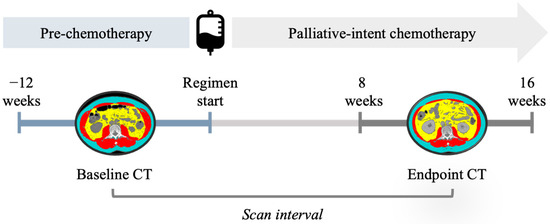
Figure 1
Open AccessArticle
Methotrexate Chemotherapy Causes Growth Impairments, Vitamin D Deficiency, Bone Loss, and Altered Intestinal Metabolism—Effects of Calcitriol Supplementation
Cancers 2023, 15(17), 4367; https://doi.org/10.3390/cancers15174367 (registering DOI) - 01 Sep 2023
Abstract
Vitamin D deficiency or insufficiency is prevalent in childhood cancer patients and survivors after chemotherapy; further studies are needed to investigate the underlying aetiology and effectiveness of vitamin D supplementation in preventing chemotherapy-induced bone loss. This study used a rat model of treatment
[...] Read more.
Vitamin D deficiency or insufficiency is prevalent in childhood cancer patients and survivors after chemotherapy; further studies are needed to investigate the underlying aetiology and effectiveness of vitamin D supplementation in preventing chemotherapy-induced bone loss. This study used a rat model of treatment with antimetabolite methotrexate to investigate whether methotrexate chemotherapy causes vitamin D deficiency and if vitamin D supplementation attenuates the resultant bone loss. Methotrexate treatment (five daily injections) decreased serum vitamin D levels (from 52 to <30 ng/mL), reduced body and bone lengthening and tibial trabecular bone volume, and altered intestinal vitamin D metabolism, which was associated with intestinal mucosal damage known to cause malabsorption of nutrients, including dietary vitamin D and calcium. During the early stage after chemotherapy, mRNA expression increased for vitamin D activation enzyme CYP27B1 and for calcium-binding protein TRPV6 in the intestine. During the intestinal healing stage, expression of vitamin D catabolism enzyme CYP24 increased, and that of TRPV6 was normalised. Furthermore, subcutaneous calcitriol supplementation diminished methotrexate-induced bone loss due to its effect suppressing methotrexate-induced increased bone resorption. Thus, in young rats, methotrexate chemotherapy causes vitamin D deficiency, growth impairments, bone loss, and altered intestinal vitamin D metabolism, which are associated with intestinal damage, and vitamin D supplementation inhibits methotrexate-induced bone loss.
Full article
(This article belongs to the Collection Targeting Solid Tumors)
►▼
Show Figures
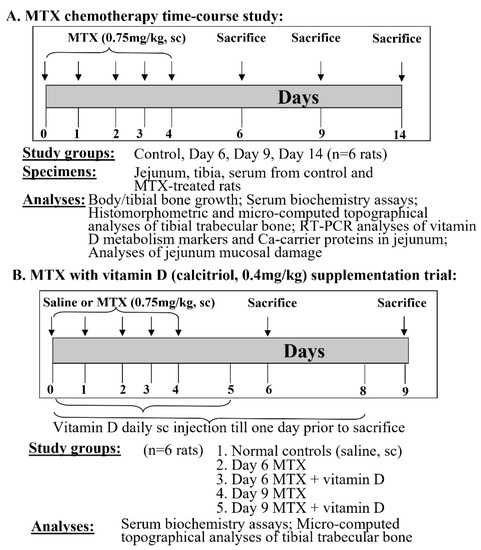
Figure 1
Open AccessSystematic Review
Recruitment and Retention Strategies Used in Dietary Randomized Controlled Interventions with Cancer Survivors: A Systematic Review
Cancers 2023, 15(17), 4366; https://doi.org/10.3390/cancers15174366 (registering DOI) - 01 Sep 2023
Abstract
Background: The purpose of this review was to systematically evaluate the quality of reporting of recruitment and retention methods in diet-related intervention trials among cancer survivors. Methods: A systematic search of five databases in Spring 2023 identified dietary intervention randomized controlled trials with
[...] Read more.
Background: The purpose of this review was to systematically evaluate the quality of reporting of recruitment and retention methods in diet-related intervention trials among cancer survivors. Methods: A systematic search of five databases in Spring 2023 identified dietary intervention randomized controlled trials with a minimum of 50 cancer survivors, an intervention of at least eight weeks, and at least six months of study duration. Outcomes investigated include methodologic description and reporting of recruitment and retention rates. Results: Seventeen trials met inclusion criteria. Recruitment methods included cancer registry and clinician referral, hospital records, flyers, and media campaigns, and were reported in 88.2% of studies. Eleven of 17 studies (64.7%) met a priori recruitment goals. Eleven studies identified an a priori retention goal and seven met the goal. Retention goals were met more often for studies of less than one year (71.4%) versus greater than one year (50%), and for studies with remote or hybrid delivery (66.7%) versus only in-person delivery (50%). Conclusions: Recruitment goals and methods are frequently reported; reporting of retention methods and goals is limited. Efforts are needed to improve reporting of retention methods and rates to inform best practices and enhance the rigor of future dietary intervention trials.
Full article
(This article belongs to the Section Systematic Review or Meta-Analysis in Cancer Research)
►▼
Show Figures
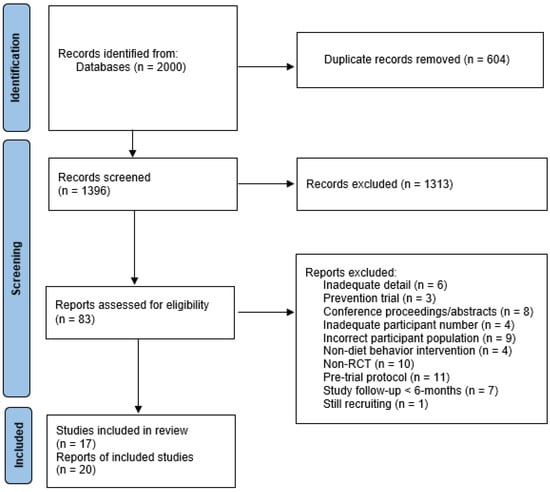
Figure 1
Open AccessArticle
Sex Differences in Vestibular Schwannoma
Cancers 2023, 15(17), 4365; https://doi.org/10.3390/cancers15174365 (registering DOI) - 01 Sep 2023
Abstract
Vestibular schwannoma (VS) are equally common in men and woman. A number of epidemiological studies have reported on sex-specific aspects of incidence, tumor size, tinnitus and hearing loss. However, data on sex-specific, pre- and post-surgically quality of life (QoL) are rare. The objective
[...] Read more.
Vestibular schwannoma (VS) are equally common in men and woman. A number of epidemiological studies have reported on sex-specific aspects of incidence, tumor size, tinnitus and hearing loss. However, data on sex-specific, pre- and post-surgically quality of life (QoL) are rare. The objective of the present study was to determine sex-specific aspects on QoL in VS. Health-related QoL was analyzed in 260 patients (112 male/148 female) with unilateral sporadic VS using general (SF-36: general Short-Form Health Survey), disease-specific (PANQOL: Penn Acoustic Neuroma Quality-of-Life Scale, PANQOL) and symptom-specific (DHI: Dizziness Handicap Inventory; HHI: Hearing Handicap Inventory; THI: Tinnitus Handicap Inventory; FDI: Facial Disability Index) QoL questionnaires. Sex differences were evaluated pre- and postoperative by multi- and univariate analyses based on 200 preoperative and 88 postoperative questionnaires. Female patients were significantly more affected by dizziness, headaches, reduced energy and anxiety. Energy and balance changed similarly in both sexes after surgery. However, postoperative women tended to be more affected by facial palsy and headaches than men. Despite the greater physical impairment, general health improved equivalently or even more in female patients than in males. In conclusion, self-rated QoL in VS is significantly affected by sex and surgery. This should be taken into account when counseling VS patients regarding observation, radiotherapy, and surgery.
Full article
(This article belongs to the Section Cancer Survivorship and Quality of Life)
►▼
Show Figures
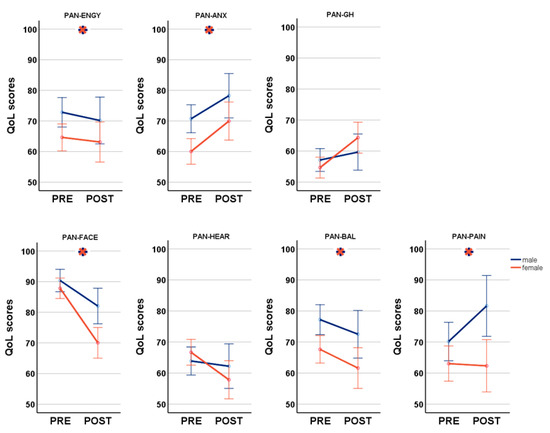
Figure 1
Open AccessReview
Applications of CRISPR Technology to Breast Cancer and Triple Negative Breast Cancer Research
by
, , , , , , and
Cancers 2023, 15(17), 4364; https://doi.org/10.3390/cancers15174364 (registering DOI) - 01 Sep 2023
Abstract
Clustered Regularly Interspaced Short Palindromic Repeats (CRISPR) technology has transformed oncology research in many ways. Breast cancer is the most prevalent malignancy globally and triple negative breast cancer (TNBC) is one of the most aggressive subtypes with numerous challenges still to be faced.
[...] Read more.
Clustered Regularly Interspaced Short Palindromic Repeats (CRISPR) technology has transformed oncology research in many ways. Breast cancer is the most prevalent malignancy globally and triple negative breast cancer (TNBC) is one of the most aggressive subtypes with numerous challenges still to be faced. In this work, we have explained what CRISPR consists of and listed its applications in breast cancer while focusing on TNBC research. These are disease modelling, the search for novel genes involved in tumour progression, sensitivity to drugs and immunotherapy response, tumour fitness, diagnosis, and treatment. Additionally, we have listed the current delivery methods employed for the delivery of CRISPR systems in vivo. Lastly, we have highlighted the limitations that CRISPR technology is subject to and the future directions that we envisage. Overall, we have provided a round summary of the aspects concerning CRISPR in breast cancer/TNBC research.
Full article
(This article belongs to the Collection Targeting Solid Tumors)
►▼
Show Figures
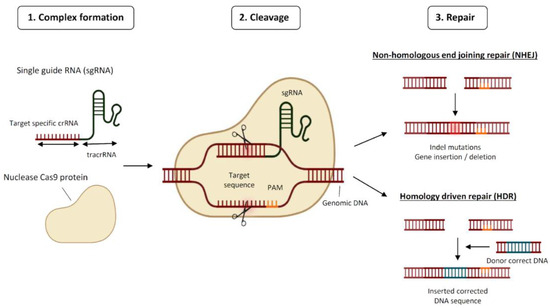
Figure 1
Open AccessArticle
Comparing Liver Venous Deprivation and Portal Vein Embolization for Perihilar Cholangiocarcinoma: Is It Time to Shift the Focus to Hepatic Functional Reserve Rather than Hypertrophy?
by
, , , , , , , , , and
Cancers 2023, 15(17), 4363; https://doi.org/10.3390/cancers15174363 (registering DOI) - 01 Sep 2023
Abstract
Purpose: Among liver hypertrophy technics, liver venous deprivation (LVD) has been recently introduced as an effective procedure to combine simultaneous portal inflow and hepatic outflow abrogation, raising growing clinical interest. The aim of this study is to investigate the role of LVD
[...] Read more.
Purpose: Among liver hypertrophy technics, liver venous deprivation (LVD) has been recently introduced as an effective procedure to combine simultaneous portal inflow and hepatic outflow abrogation, raising growing clinical interest. The aim of this study is to investigate the role of LVD for preoperative optimization of future liver remnant (FLR) in perihilar cholangiocarcinoma (PHC), especially when compared with portal vein embolization (PVE). Methods: Between January 2013 and July 2022, all patients diagnosed with PHC and scheduled for preoperative optimization of FTR, through radiological hypertrophy techniques, prior to liver resection, were included. FTR volumetric assessment was evaluated at two distinct timepoints to track the progression of both early (T1, 10 days post-procedural) and late (T2, 21 days post-procedural) efficacy indicators. Post-procedural outcomes, including functional and volumetric analyses, were compared between the LVD and the PVE cohorts. Results: A total of 12 patients underwent LVD while 19 underwent PVE. No significant differences in either post-procedural or post-operative complications were found. Post-procedural FLR function, calculated with (99m) Tc-Mebrofenin hepatobiliary scintigraphy, and kinetic growth rate, at both timepoints, were greater in the LVD cohort (3.12 ± 0.55%/min/m2 vs. 2.46 ± 0.64%/min/m2, p = 0.041; 27.32 ± 16.86%/week (T1) vs. 15.71 ± 9.82%/week (T1) p < 0.001; 17.19 ± 9.88%/week (T2) vs. 9.89 ± 14.62%/week (T2) p = 0.034) when compared with the PVE cohort. Post-procedural FTR volumes were similar for both hypertrophy techniques. Conclusions: LVD is an effective procedure to effectively optimize FLR before liver resection for PHC. The faster growth rate combined with the improved FLR function, when compared to PVE alone, could maximize surgical outcomes by lowering post-hepatectomy liver failure rates.
Full article
(This article belongs to the Special Issue Perihilar Cholangiocarcinoma)
►▼
Show Figures
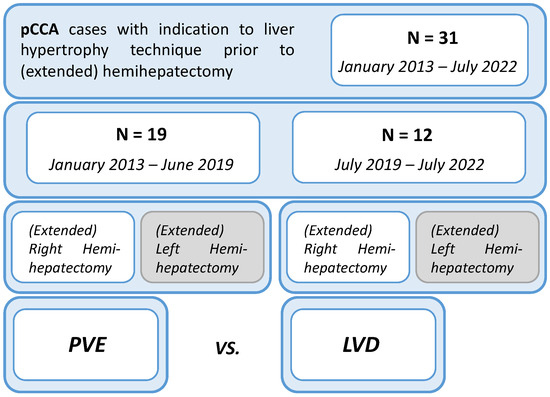
Figure 1
Open AccessArticle
Global Tanning Bed Advertising: A Comparison of Legal Regulations on Three Continents
by
, , , , and
Cancers 2023, 15(17), 4362; https://doi.org/10.3390/cancers15174362 (registering DOI) - 01 Sep 2023
Abstract
Artificial ultraviolet radiation from tanning beds has been classified as carcinogenic by the International Agency for Research on Cancer in 2009. Several countries have subsequently introduced comprehensive legislation regulating commercial indoor tanning. Specific aspects of these regulations address tanning bed advertising and information
[...] Read more.
Artificial ultraviolet radiation from tanning beds has been classified as carcinogenic by the International Agency for Research on Cancer in 2009. Several countries have subsequently introduced comprehensive legislation regulating commercial indoor tanning. Specific aspects of these regulations address tanning bed advertising and information requirements for tanning bed customers, which have been previously neglected in international comparisons of indoor tanning regulations. We performed a systematic search regarding legislation on these aspects in 131 legislative units across three continents (North America, Australia/New Zealand, Europe). The legal restrictions found varied widely in type and content. In 49 legislative units we identified total (n = 8) or partial legal bans (n = 41) on advertising for indoor tanning, while 64 legislative units enacted 5regulations that necessitate the dissemination of different types of specific health information to tanning bed customers. Nearly 40% of the legislative units of the study region lacked any legislation on these issues altogether. The heterogenous results emphasize the need for an international dialogue between health authorities and governments to harmonize the regulatory framework for tanning bed advertising and information requirements to a level better protecting the public from skin cancer. Our comprehensive international comparison can serve as a starting point for such a harmonization process that may ultimately protect the public worldwide from misleading tanning bed advertising.
Full article
(This article belongs to the Special Issue Skin Cancer: Risk Factors and Prevention)
Open AccessArticle
The Impact of Sidedness on the Efficacy of Anti-EGFR-Based First-Line Chemotherapy in Advanced Colorectal Cancer Patients in Real-Life Setting—A Nation-Wide Retrospective Analysis (RACER)
by
, , , , , , , , , , , , , , , , , , , , , , , , , and add
Show full author list
remove
Hide full author list
Cancers 2023, 15(17), 4361; https://doi.org/10.3390/cancers15174361 (registering DOI) - 01 Sep 2023
Abstract
Anti-EGFR antibodies combined with chemotherapy doublets are a cornerstone of the upfront treatment of colorectal cancer. RAS and BRAF mutations are established negative predictive factors for such therapy. The primary tumour located in the proximal colon has recently emerged as another negative predictive
[...] Read more.
Anti-EGFR antibodies combined with chemotherapy doublets are a cornerstone of the upfront treatment of colorectal cancer. RAS and BRAF mutations are established negative predictive factors for such therapy. The primary tumour located in the proximal colon has recently emerged as another negative predictive factor. We have conducted a retrospective multicentre study to collect data on real-world population characteristics, practice patterns, and outcomes in patients with metastatic colorectal cancer treated in a first-line setting with either cetuximab or panitumumab in combination with either FOLFOX or FOLFIRI chemotherapy. The presented analysis focuses on the impact of the primary tumour location. 126 of 842 patients analysed (15.0%) had proximal primary. It was associated with a lower BMI at diagnosis, mucinous histology, and peritoneal metastases. It was also associated with inferior treatment outcomes in terms of response ratio: 59.4% vs. 74.22% (odds ratio [OR] 0.51, 95% CI 0.33–0.78, p = 0.010), and median depth of response: −36.7% vs. −50.0% (p = 0.038). There was only a borderline non-significant trend for inferior PFS in patients with proximal tumours. OS data was incomplete. The presented analysis confirms the negative impact of tumour sidedness on the efficacy of an upfront anti-EGFR-chemotherapy combination and provides valuable data on real-world population characteristics.
Full article
(This article belongs to the Special Issue Chemotherapy for Colorectal Cancer)
►▼
Show Figures
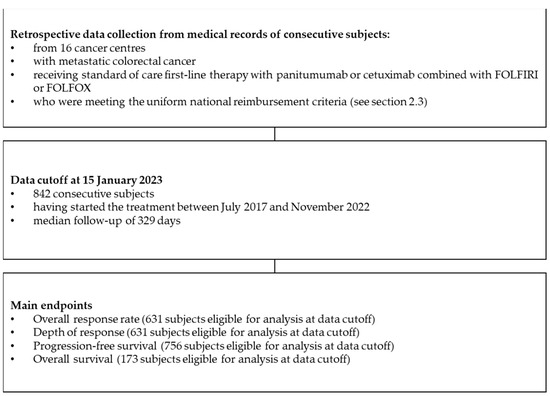
Figure 1
Open AccessArticle
Effectiveness and Safety of Palbociclib plus Endocrine Therapy in Patients with Advanced Breast Cancer: A Multi-Center Study in China
by
, , , , , , , , , , , , and
Cancers 2023, 15(17), 4360; https://doi.org/10.3390/cancers15174360 (registering DOI) - 01 Sep 2023
Abstract
Background: Palbociclib has been approved for marketing in China. However, its effectiveness, safety, and latent variables in the Chinese population require further investigation. Methods: Information was retrieved from 397 patients with metastatic breast cancer (mBC) who received at least two cycles of palbociclib
[...] Read more.
Background: Palbociclib has been approved for marketing in China. However, its effectiveness, safety, and latent variables in the Chinese population require further investigation. Methods: Information was retrieved from 397 patients with metastatic breast cancer (mBC) who received at least two cycles of palbociclib plus endocrine therapy (PAL plus ET) at eight clinical sites in China. The patients’ demographic characteristics, treatment patterns, and adverse events (AEs) were analyzed. Results: The objective response rate (ORR) and clinical benefit rate (CBR) for PAL plus ET were 28.97% and 66.25%, respectively. The median PFS was 14.2 months in the whole population. In addition to protein Ki-67 status and sensitivity to ETs, no liver metastases, fewer metastatic sites, an earlier line of therapy, and treatment combined with AI instead of FUL were also considered as independent prognostic factors for PAL treatment. Administration of PAL was generally well tolerated in patients with hormone-receptor-positive and human-epidermal-growth-factor-receptor-2-negative (HR+/HER2−) advanced breast cancer (ABC). The therapy was safe in the elderly population, which is consistent with the outcomes of the whole population and previous reports. Conclusions: In this most widely distributed study in China to date, palbociclib combined with ET proved its effectiveness for HR+/HER2− ABC treatment, and adverse events were manageable. Here, we identified some independent prognosis factors, but the mechanism by which these factors influence effectiveness requires further verification.
Full article
(This article belongs to the Section Cancer Therapy)
►▼
Show Figures
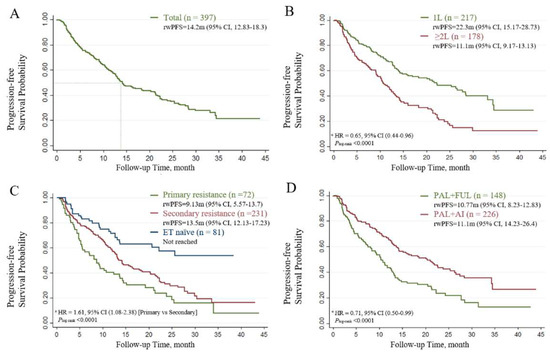
Figure 1
Open AccessArticle
Outcome of Second Primary Malignancies Developing in Multiple Myeloma Patients
by
, , , , , , , , , , , , , , , , , , , , , , , , , , , , and add
Show full author list
remove
Hide full author list
Cancers 2023, 15(17), 4359; https://doi.org/10.3390/cancers15174359 (registering DOI) - 01 Sep 2023
Abstract
Background: There is an increased risk of second primary malignancies (SMPs) in patients with multiple myeloma (MM). This multinational ‘real-world’ retrospective study analyzed the characteristics and outcomes of MM patients that developed SPMs. Results: 165 patients were analyzed: 62.4% males; 8.5% with a
[...] Read more.
Background: There is an increased risk of second primary malignancies (SMPs) in patients with multiple myeloma (MM). This multinational ‘real-world’ retrospective study analyzed the characteristics and outcomes of MM patients that developed SPMs. Results: 165 patients were analyzed: 62.4% males; 8.5% with a prior cancer; 113 with solid SPMs, mainly ≥stage 2; and 52 with hematological SPM (hemato-SPM), mainly MDS/AML. Patients with hemato-SPM were younger (p = 0.05) and more frequently had a prior AutoHCT (p = 0.012). The time to SPM was shorter in the older (>65 years) and more heavily pretreated patients. One hundred patients were actively treated at the time of SPM detection. Treatment was discontinued in 52, substituted with another anti-MM therapy in 15, and continued in 33 patients. Treatment discontinuation was predominant in the patients diagnosed with hemato-SPM (76%). The median OS following SPM detection was 8.5 months, and the main cause of death was SPM. A poor ECOG status predicted a shorter OS (PS 3 vs. 0, HR = 5.74, 2.32–14.21, p < 0.001), whereas a normal hemoglobin level (HR = 0.43, 0.19–0.95, p = 0.037) predicted longer OS. Conclusions: With the continuing improvement in OS, a higher proportion of MM patients might develop SPM. The OS following SPM diagnosis is poor; hence, frequent surveillance and early detection are imperative to improve outcomes.
Full article
(This article belongs to the Section Cancer Therapy)
►▼
Show Figures
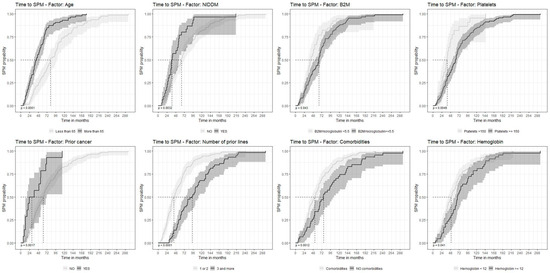
Figure 1
Open AccessArticle
Predictive Value of Modified Glasgow Prognostic Score and Persistent Inflammation among Patients with Non-Small Cell Lung Cancer Treated with Durvalumab Consolidation after Chemoradiotherapy: A Multicenter Retrospective Study
by
, , , , , , , , , , , , and
Cancers 2023, 15(17), 4358; https://doi.org/10.3390/cancers15174358 (registering DOI) - 01 Sep 2023
Abstract
Background: Durvalumab consolidation after chemoradiotherapy (CRT) is a standard treatment for locally advanced non-small cell lung cancer (NSCLC). However, studies on immunological and nutritional markers to predict progression-free survival (PFS) and overall survival (OS) are inadequate. Systemic inflammation causes cancer cachexia and negatively
[...] Read more.
Background: Durvalumab consolidation after chemoradiotherapy (CRT) is a standard treatment for locally advanced non-small cell lung cancer (NSCLC). However, studies on immunological and nutritional markers to predict progression-free survival (PFS) and overall survival (OS) are inadequate. Systemic inflammation causes cancer cachexia and negatively affects immunotherapy efficacy, which also reflects survival outcomes. Patients and Methods: We retrospectively investigated 126 patients from seven institutes in Japan. Results: The modified Glasgow Prognostic Score (mGPS) values, before and after CRT, were the essential predictors among the evaluated indices. A systemic inflammation-based prognostic risk classification was created by combining mGPS values before CRT, and C-reactive protein (CRP) levels after CRT, to distinguish tumor-derived inflammation from CRT-induced inflammation. Patients were classified into high-risk (n = 31) and low-risk (n = 95) groups, and the high-risk group had a significantly shorter median PFS of 7.2 months and an OS of 19.6 months compared with the low-risk group. The hazard ratios for PFS and OS were 2.47 (95% confidence interval [CI]: 1.46–4.19, p < 0.001) and 3.62 (95% CI: 1.79–7.33, p < 0.001), respectively. This association was also observed in the subgroup with programmed cell death ligand 1 expression of ≥50%, but not in the <50% subgroup. Furthermore, durvalumab discontinuation was observed more frequently in the high-risk group than in the low-risk group. Conclusion: Combining pre-CRT mGPS values with post-CRT CRP levels in patients with locally advanced NSCLC helps to predict the PFS and OS of durvalumab consolidation after CRT.
Full article
(This article belongs to the Section Cancer Immunology and Immunotherapy)
►▼
Show Figures

Figure 1
Open AccessReview
Lineage Plasticity and Stemness Phenotypes in Prostate Cancer: Harnessing the Power of Integrated “Omics” Approaches to Explore Measurable Metrics
by
, , , , , and
Cancers 2023, 15(17), 4357; https://doi.org/10.3390/cancers15174357 (registering DOI) - 01 Sep 2023
Abstract
Prostate cancer (PCa), the most frequent and second most lethal cancer type in men in developed countries, is a highly heterogeneous disease. PCa heterogeneity, therapy resistance, stemness, and lethal progression have been attributed to lineage plasticity, which refers to the ability of neoplastic
[...] Read more.
Prostate cancer (PCa), the most frequent and second most lethal cancer type in men in developed countries, is a highly heterogeneous disease. PCa heterogeneity, therapy resistance, stemness, and lethal progression have been attributed to lineage plasticity, which refers to the ability of neoplastic cells to undergo phenotypic changes under microenvironmental pressures by switching between developmental cell states. What remains to be elucidated is how to identify measurements of lineage plasticity, how to implement them to inform preclinical and clinical research, and, further, how to classify patients and inform therapeutic strategies in the clinic. Recent research has highlighted the crucial role of next-generation sequencing technologies in identifying potential biomarkers associated with lineage plasticity. Here, we review the genomic, transcriptomic, and epigenetic events that have been described in PCa and highlight those with significance for lineage plasticity. We further focus on their relevance in PCa research and their benefits in PCa patient classification. Finally, we explore ways in which bioinformatic analyses can be used to determine lineage plasticity based on large omics analyses and algorithms that can shed light on upstream and downstream events. Most importantly, an integrated multiomics approach may soon allow for the identification of a lineage plasticity signature, which would revolutionize the molecular classification of PCa patients.
Full article
(This article belongs to the Special Issue Stem Cell Origin of Cancers: Biological and Clinical Implications of a Unified Theory of Cancer)
►▼
Show Figures
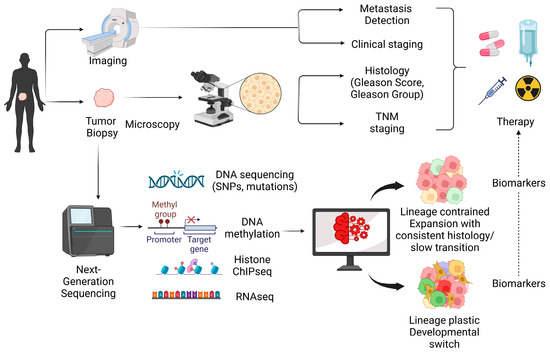
Figure 1
Open AccessArticle
Metabolic Reprogramming by Ribitol Expands the Therapeutic Window of BETi JQ1 against Breast Cancer
Cancers 2023, 15(17), 4356; https://doi.org/10.3390/cancers15174356 (registering DOI) - 01 Sep 2023
Abstract
Many cancer patients still lack effective treatments, and pre-existing or acquired resistance limits the clinical benefit of even the most advanced medicines. Recently, much attention has been given to the role of metabolism in cancer, expanding from the Warburg effect to highlight unique
[...] Read more.
Many cancer patients still lack effective treatments, and pre-existing or acquired resistance limits the clinical benefit of even the most advanced medicines. Recently, much attention has been given to the role of metabolism in cancer, expanding from the Warburg effect to highlight unique patterns that, in turn, may improve diagnostic and therapeutic approaches. Our recent metabolomics study revealed that ribitol can alter glycolysis in breast cancer cells. In the current study, we investigate the combinatorial effects of ribitol with several other anticancer drugs (chrysin, lonidamine, GSK2837808A, CB-839, JQ1, and shikonin) in various breast cancer cells (MDA-MB-231, MCF-7, and T-47D). The combination of ribitol with JQ1 synergistically inhibited the proliferation and migration of breast cancer cells cell-type dependently, only observed in the triple-negative MDA-MB-231 breast cancer cells. This synergy is associated with the differential effects of the 2 compounds on expression of the genes involved in cell survival and death, specifically downregulation in c-Myc and other anti-apoptotic proteins (Bcl-2, Bcl-xL, Mcl-1), but upregulation in p53 and cytochrome C levels. Glycolysis is differentially altered, with significant downregulation of glucose-6-phosphate and lactate by ribitol and JQ1, respectively. The overall effect of the combined treatment on metabolism and apoptosis-related genes results in significant synergy in the inhibition of cell growth and induction of apoptosis. Given the fact that ribitol is a metabolite with limited side effects, a combined therapy is highly desirable with relative ease to apply in the clinic for treating an appropriate cancer population. Our results also emphasize that, similar to traditional drug development, the therapeutic potential of targeting metabolism for cancer treatment may only be achieved in combination with other drugs and requires the identification of a specific cancer population. The desire to apply metabolomic intervention to a large scope of cancer types may be one of the reasons identification of this class of drugs in a clinical trial setting has been delayed.
Full article
(This article belongs to the Special Issue Cancer Cell Metabolism and Drug Targets)
►▼
Show Figures
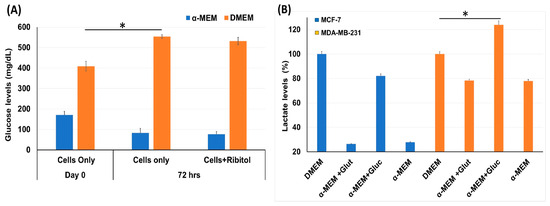
Figure 1
Open AccessArticle
New Prognostic Score (Essen Score) to Predict Postoperative Morbidity after Resection of Lung Metastases
by
, , , , , , , , , , and
Cancers 2023, 15(17), 4355; https://doi.org/10.3390/cancers15174355 (registering DOI) - 01 Sep 2023
Abstract
Background: Pulmonary metastasectomy (PM) is a widely accepted surgical procedure. This study aims to investigate postoperative morbidity and mortality after PM and develop a score to predict high-risk patients. Methods: We retrospectively investigated all patients undergoing a PM in our institution from November
[...] Read more.
Background: Pulmonary metastasectomy (PM) is a widely accepted surgical procedure. This study aims to investigate postoperative morbidity and mortality after PM and develop a score to predict high-risk patients. Methods: We retrospectively investigated all patients undergoing a PM in our institution from November 2012 to January 2023. Complications were defined as the diagnosis of any new disease after the PM up to 30 days after the operation. Results: 1284 patients were identified. At least one complication occurred in 145 patients (11.29%). Only one patient died during the hospital stay. Preoperative cardiovascular comorbidities (OR: 2.99, 95% CI: 1.412–3.744, p = 0.01), major lung resections (OR: 2.727, 95% CI: 1.678–4.431, p < 0.01), repeated pulmonary metastasectomy (OR: 1.759, 95% CI: 1.040–2.976, p = 0.03) and open thoracotomy (OR: 0.621, 95% CI: 0.415–0.930, p = 0.02) were identified as independent factors for postoperative complications. Based on the above independent factors for postoperative morbidity, the Essen score was developed (overall correct classification: 94.6%, ROC-Analysis: 0.828, 95% CI: 0.795–0.903). Conclusion: PM is a safe surgical procedure with acceptable morbidity and low mortality. The aim of the Essen score is to identify patients that are associated with risk for postoperative complications after PM.
Full article
(This article belongs to the Special Issue Surgery in Metastatic Cancer)
►▼
Show Figures
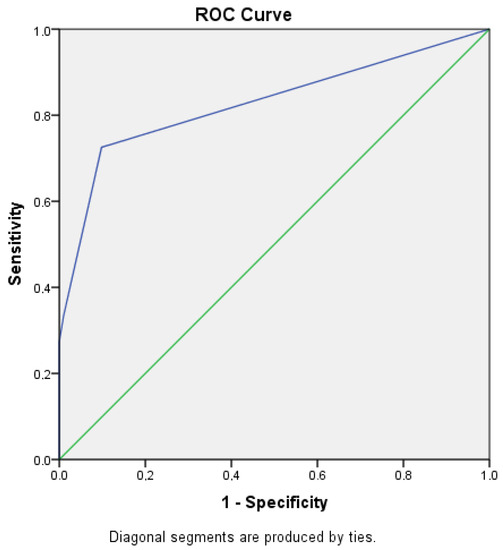
Figure 1
Open AccessSystematic Review
Hematological Adverse Events with Tyrosine Kinase Inhibitors for Chronic Myeloid Leukemia: A Systematic Review with Meta-Analysis
by
, , , , , , and
Cancers 2023, 15(17), 4354; https://doi.org/10.3390/cancers15174354 - 31 Aug 2023
Abstract
Chronic myeloid leukemia (CML) is treated with tyrosine kinase inhibitors (TKI) that target the pathological BCR-ABL1 fusion oncogene. The objective of this statistical meta-analysis was to assess the prevalence of other hematological adverse events (AEs) that occur during or after predominantly first-line treatment
[...] Read more.
Chronic myeloid leukemia (CML) is treated with tyrosine kinase inhibitors (TKI) that target the pathological BCR-ABL1 fusion oncogene. The objective of this statistical meta-analysis was to assess the prevalence of other hematological adverse events (AEs) that occur during or after predominantly first-line treatment with TKIs. Data from seventy peer-reviewed, published studies were included in the analysis. Hematological AEs were assessed as a function of TKI drug type (dasatinib, imatinib, bosutinib, nilotinib) and CML phase (chronic, accelerated, blast). AE prevalence aggregated across all severities and phases was significantly different between each TKI (p < 0.05) for anemia—dasatinib (54.5%), bosutinib (44.0%), imatinib (32.8%), nilotinib (11.2%); neutropenia—dasatinib (51.2%), imatinib (29.8%), bosutinib (14.1%), nilotinib (14.1%); thrombocytopenia—dasatinib (62.2%), imatinib (30.4%), bosutinib (35.3%), nilotinib (22.3%). AE prevalence aggregated across all severities and TKIs was significantly (p < 0.05) different between CML phases for anemia—chronic (28.4%), accelerated (66.9%), blast (55.8%); neutropenia—chronic (26.7%), accelerated (63.8%), blast (36.4%); thrombocytopenia—chronic (33.3%), accelerated (65.6%), blast (37.9%). An odds ratio (OR) with 95% confidence interval was used to compare hematological AE prevalence of each TKI compared to the most common first-line TKI therapy, imatinib. For anemia, dasatinib OR = 1.65, [1.51, 1.83]; bosutinib OR = 1.34, [1.16, 1.54]; nilotinib OR = 0.34, [0.30, 0.39]. For neutropenia, dasatinib OR = 1.72, [1.53, 1.92]; bosutinib OR = 0.47, [0.38, 0.58]; nilotinib OR = 0.47, [0.42, 0.54]. For thrombocytopenia, dasatinib OR = 2.04, [1.82, 2.03]; bosutinib OR = 1.16, [0.97, 1.39]; nilotinib OR = 0.73, [0.65, 0.82]. Nilotinib had the greatest fraction of severe (grade 3/4) hematological AEs (30%). In conclusion, the overall prevalence of hematological AEs by TKI type was: dasatinib > bosutinib > imatinib > nilotinib. Study limitations include inability to normalize for dosage and treatment duration.
Full article
(This article belongs to the Special Issue Inhibitors in Chronic Myeloid Leukemia)
►▼
Show Figures
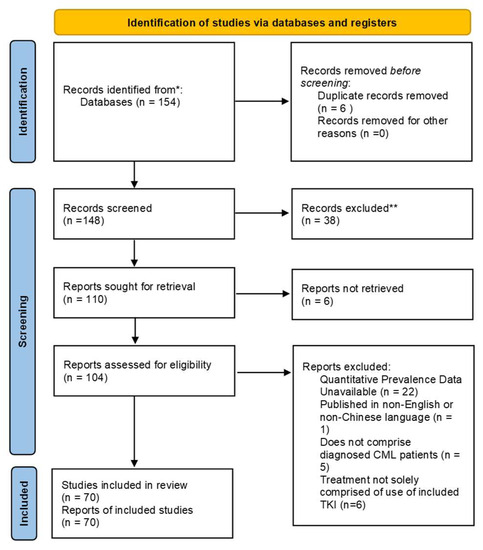
Figure 1
Open AccessArticle
Advanced Non-Clear Cell Renal Cell Carcinoma Treatments and Survival: A Real-World Single-Centre Experience
by
, , , , , , , and
Cancers 2023, 15(17), 4353; https://doi.org/10.3390/cancers15174353 (registering DOI) - 31 Aug 2023
Abstract
Background: Non-clear cell renal cell carcinoma (nccRCC) is a heterogeneous group of cancer. Treatment recommendations are extrapolated from ccRCC and lack solid evidence. Here, we review advanced nccRCC patients treated at our institute. Patients and methods: We collected retrospective data on all advanced
[...] Read more.
Background: Non-clear cell renal cell carcinoma (nccRCC) is a heterogeneous group of cancer. Treatment recommendations are extrapolated from ccRCC and lack solid evidence. Here, we review advanced nccRCC patients treated at our institute. Patients and methods: We collected retrospective data on all advanced nccRCC pts treated at the Istituto Oncologico Veneto from January 2008. We compared overall response rate (ORR), progression free survival (PFS) and overall survival (OS) according to histological subtypes and type of systemic treatments. Kaplan-Meier method, log-rank test and Cox regression were used to estimate and compare PFS and OS. Results: Of 1370 RCC patients, 289 had a diagnosis of nccRCC and 121 were eligible for the analysis. Fifty-three pts showed papillary histology (pRCC), 15 chromophobe; 37 unclassified RCC (NOS-RCC), 16 other histologies. Pts with chromophobe and other hystologies showed poorer survival rates compared to pRCC and NOS-RCC (mOS 10.7 vs. 20.7 vs. 30.7, p = 0.34). Pts treated with combination regimens achieved a better OS (30.7 vs. 13.7, p = 0.10), PFS (12.7 vs. 6.4, p = 0.10) and ORR (42.4% vs. 13.9%, p = 0.002) than those treated with monotherapy. IMDC and Meet-URO score retained their prognostic value. Conclusion: Our retrospective real-life cohort of advanced nccRCC patients shows that immunotherapy-based combinations could improve ORR, PFS and OS compared to TKI monotherapy. Prospective trials for nccRCC patients utilizing novel therapies are ongoing and their results eagerly awaited.
Full article
(This article belongs to the Special Issue Advances in Antitumor Molecular-Targeted Agents of Urological Cancers)
Open AccessReview
Challenges and Prospects of Patient-Derived Xenografts for Cancer Research
Cancers 2023, 15(17), 4352; https://doi.org/10.3390/cancers15174352 - 31 Aug 2023
Abstract
We discuss the importance of the in vivo models in elucidating cancer biology, focusing on the patient-derived xenograft (PDX) models, which are classic and standard functional in vivo platforms for preclinical evaluation. We provide an overview of the most representative models, including cell-derived
[...] Read more.
We discuss the importance of the in vivo models in elucidating cancer biology, focusing on the patient-derived xenograft (PDX) models, which are classic and standard functional in vivo platforms for preclinical evaluation. We provide an overview of the most representative models, including cell-derived xenografts (CDX), tumor and metastatic cell-derived xenografts, and PDX models utilizing humanized mice (HM). The orthotopic models, which could reproduce the cancer environment and its progression, similar to human tumors, are particularly common. The standard procedures and rationales of gastric adenocarcinoma (GAC) orthotopic models are addressed. Despite the significant advantages of the PDX models, such as recapitulating key features of human tumors and enabling drug testing in the in vivo context, some challenges must be acknowledged, including loss of heterogeneity, selection bias, clonal evolution, stroma replacement, tumor micro-environment (TME) changes, host cell carryover and contaminations, human-to-host cell oncogenic transformation, human and host viral infections, as well as limitations for immunologic research. To compensate for these limitations, other mouse models, such as syngeneic and humanized mouse models, are currently utilized. Overall, the PDX models represent a powerful tool in cancer research, providing critical insights into tumor biology and potential therapeutic targets, but their limitations and challenges must be carefully considered for their effective use. Lastly, we present an intronic quantitative PCR (qPCR) method to authenticate, detect, and quantify human/murine cells in cell lines and PDX samples.
Full article
(This article belongs to the Special Issue Gastric Cancers: Molecular Mechanisms, Novel Targets and Immunotherapies: From Bench to Clinical Therapeutics)
►▼
Show Figures

Figure 1

Journal Menu
► ▼ Journal Menu-
- Cancers Home
- Aims & Scope
- Editorial Board
- Reviewer Board
- Topical Advisory Panel
- Instructions for Authors
- Special Issues
- Topics
- Sections & Collections
- Article Processing Charge
- Indexing & Archiving
- Editor’s Choice Articles
- Most Cited & Viewed
- Journal Statistics
- Journal History
- Journal Awards
- Society Collaborations
- Conferences
- Editorial Office
Journal Browser
► ▼ Journal BrowserHighly Accessed Articles
Latest Books
E-Mail Alert
News
Topics
Topic in
Biology, Biomedicines, Cancers, Current Oncology, Onco
Targeting Signaling Networks for Cancer Therapy
Topic Editors: Renato Bassan, Jose-Maria Ribera, Linlin GuoDeadline: 5 September 2023
Topic in
Cancers, Biology, Current Oncology, IJMS, JCM
Advances in Molecular and Cellular Studies in Oral Diseases
Topic Editors: Bing Liu, Ming ZhongDeadline: 20 September 2023
Topic in
Cancers, Diseases, Geriatrics, Healthcare, Women
Women's Health and Aging
Topic Editors: Li Yang, Rosa Legood, Fei MaDeadline: 25 September 2023
Topic in
BioMedInformatics, Cancers, Current Oncology, Diagnostics, Healthcare
Real-Time Monitoring for Improving Cancer Diagnosis and Prognosis
Topic Editors: Maria Li Lung, Josephine KoDeadline: 19 October 2023

Conferences
Special Issues
Special Issue in
Cancers
Radiation Biology of Glioblastoma—Defining Clinically Relevant Novel Targets and New Therapies for Improved Patient Outcomes
Guest Editors: Thomas Flannery, Kevin PriseDeadline: 1 September 2023
Special Issue in
Cancers
Treatment Modalities for Non-small Cell Lung Cancer— a Clinical Survey
Guest Editor: Joerg LindenmannDeadline: 14 September 2023
Special Issue in
Cancers
Machine Learning and Radiomics Applications of MRI-Guided Treatments in Cancers
Guest Editor: Harini VeeraraghavanDeadline: 30 September 2023
Special Issue in
Cancers
Genomic Medicine in Cancer
Guest Editors: Maria Rossing, Valtteri WirtaDeadline: 15 October 2023
Topical Collections
Topical Collection in
Cancers
Drug Resistance and Novel Therapies in Cancers
Collection Editor: Zhixiang Wang
Topical Collection in
Cancers
Emerging Therapeutics in Advanced Melanoma
Collection Editors: Jeremy S. Bordeaux, Luke D. Rothermel





